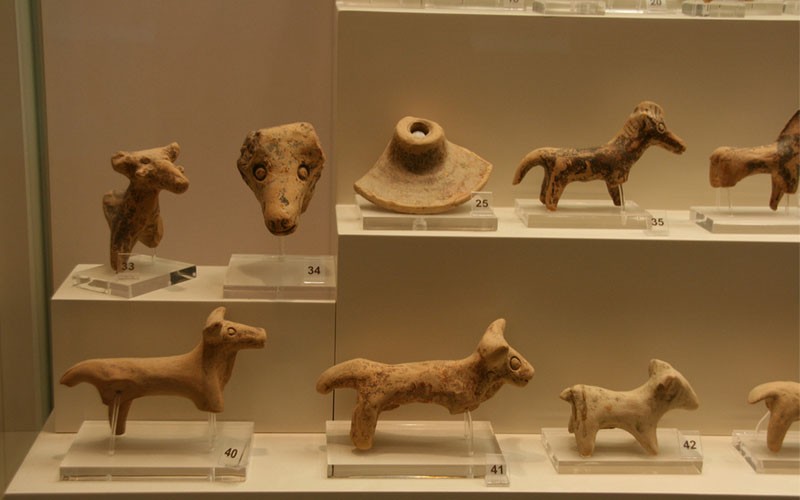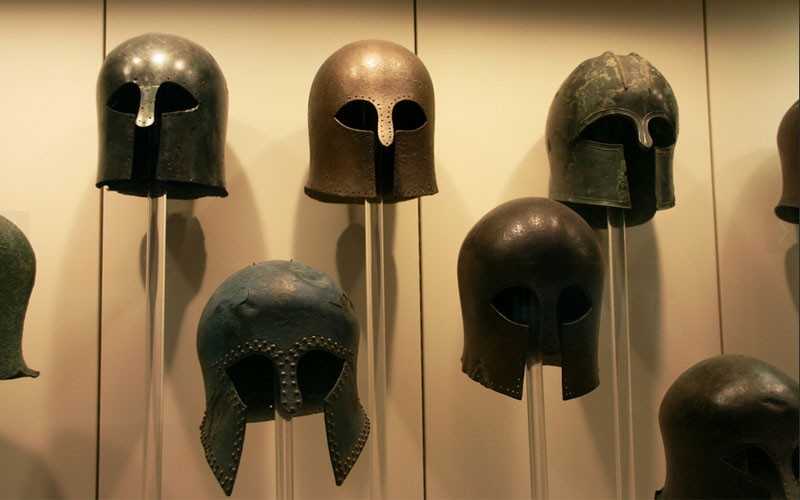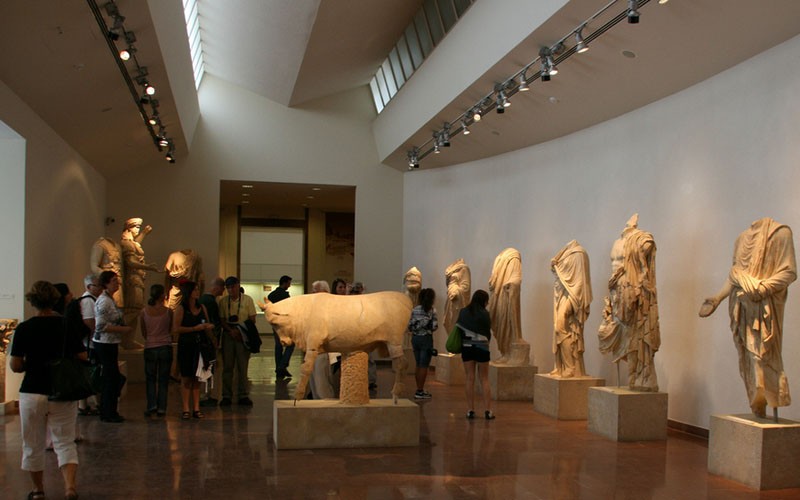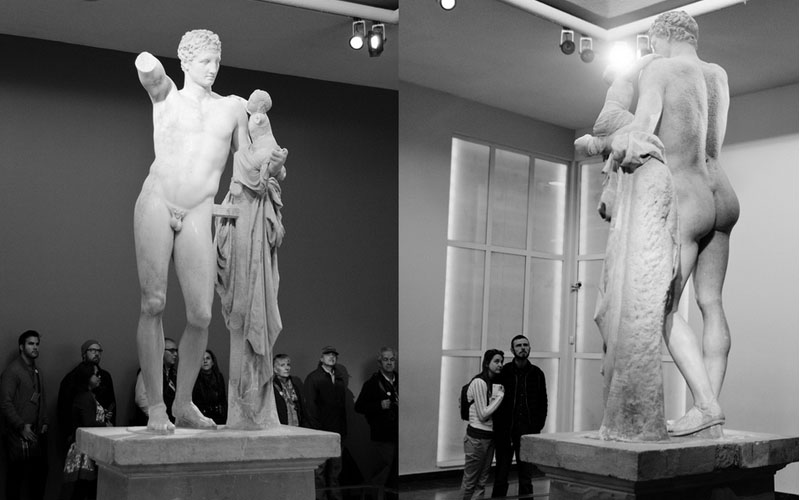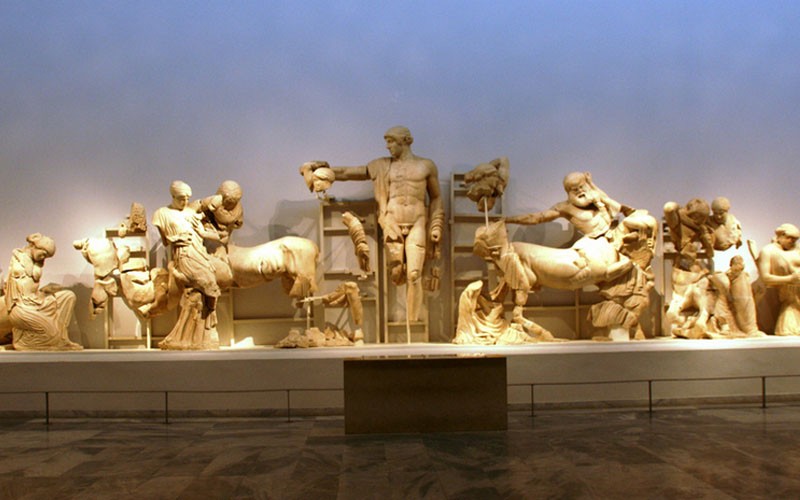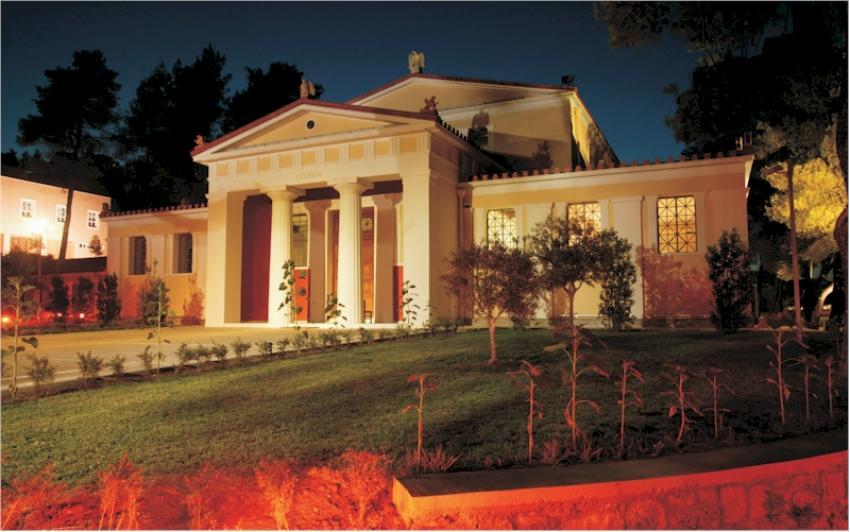The Old Museum reopened as a Museum of the History of the Olympic Games.
The Archaeological Museum of Olympia is one of the most important museums in Greece. It hosts collections of finds from the Sanctuary of Zeus at Olympia, where they were born and celebrated in antiquity the Olympic Games. Its collections include:
Prehistoric collection
The Prehistoric Museum’s collection consists of pottery, tools, weapons, figurines and jewelry dating from the EH (2800-2000 BC) to the Late Bronze Age (1600-1100 BC). The Helladic and Middle Helladic period (2000-1600 BC) represented by several vessels, amafrochroma Minyan and vases with engraved decoration from the Altis. These are mainly bowls, beetles, jugs, bowls, sauce boats, etc. A representative sample of Middle Helladic is the jug (K 1206) with engraved decoration.
The Late Helladic or Mycenaean period (1600-1100 BC) is represented with rich ceramics, jewelry, figurines and weapons, which are derived from chamber tombs investigated in Olympia and the surrounding area (pruning, Makrisia, Diasella, Samiko etc. .). The most typical pottery of this period is the stirrup jars, the cups, the alabaster, pitchers and bowls.
Among the most characteristic findings on display are:
Stirrup jar (W 356).
Clay jug with polychrome decoration of stylized birds from Samiko (W 49).
Tripod compass of Kladeo (W 592).
Ritual vessel (rhyton) from Samiko (W 70).
There are several weapons (swords, manuals, spears and arrows), as well as tools (knives, razors, tweezers, etc.). Indicatively shown:
Bronze spearhead (M 370).
Bronze dagger (M 369).
Helmet of boar tusks, the so-called Homeric “dogs” (D 126).
Finally you will see plenty of jewelery (necklaces and diadems mostly made of glass) and the gems of semi-precious stones.
